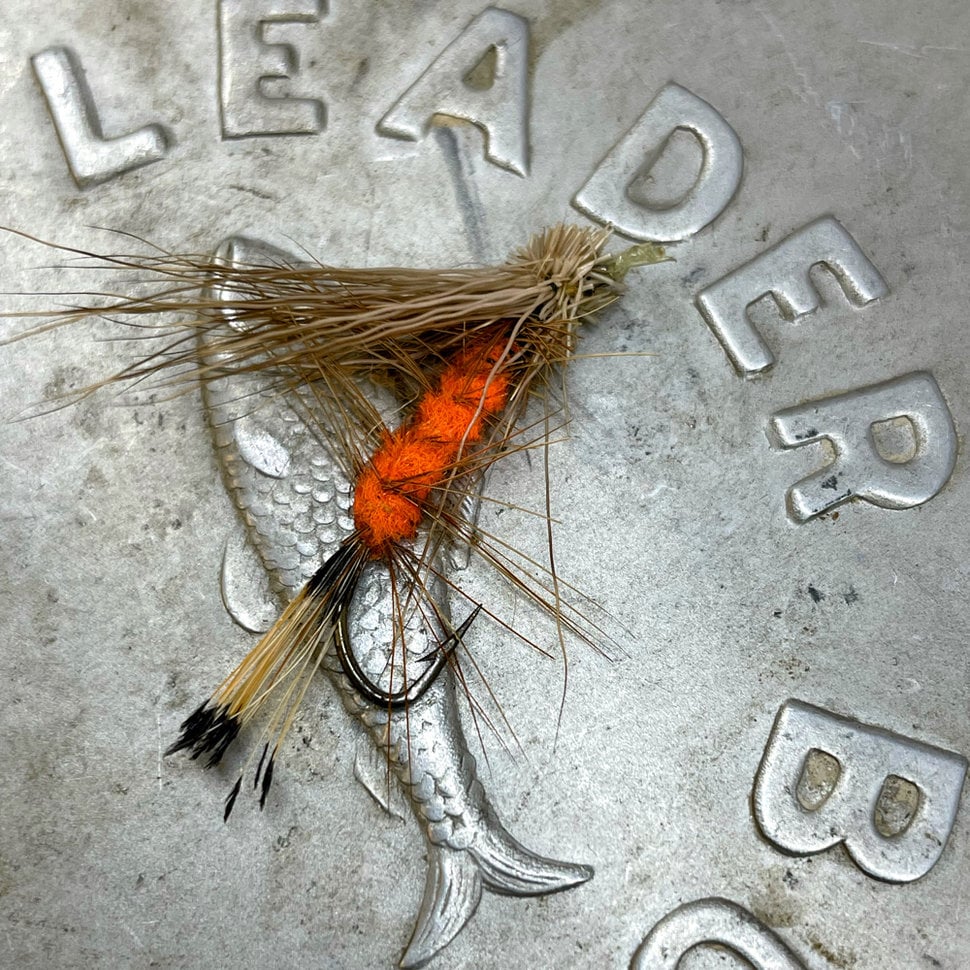The Falk

This story begins on the upper floors of a downtown department store in the heart of Portland, Oregon. There, Audrey Joy spun her magic under the watchful eyes of local businessmen on their lunch break, and dutiful husbands accompanying their clothes-shopping wives. Audrey was from Idaho, the daughter of a tackle maker and the creator of the treadle vise she tied on. She came to Portland in 1945, just after the war, taking the position in Meier & Frank vacated by Polly Rosborough.
During her twenty-odd-year tenure, her tying skills influenced many local fly tyers, both young and old. One regular visitor to her small booth was a draftsman from the county assessors' office just a few blocks away. During lunch breaks, he would often take his sandwich and walk to the M&F building to see what patterns Audrey was working on and pick up a box of hooks or other needed materials.
On one occasion, Audrey was filling an order for a gentleman by the name of Leo Falk. The pattern caught the eye of her noontime visitor, he envisioning slight changes he would add to "improve" on the original. They chatted about the possibilities before he needed to return to his drafting table.
The working day over, the bus ride home provided time to fine-tune his idea. That evening, with dinner done and dishes washed and dried, he retired to his tying bench to blend his ideas into a pattern he christened the Falk, paying homage to the pattern produced on Audrey's treadle vise.
Time passed, and the Falk became a family favorite on the Deschutes and other Oregon rivers. His son landed his first Steelhead on the fly and later suffered a blow to his ego and big toe in an incident referred to as "the tragedy at Cunningham Ranch." The Falk at the center of that story, but we'll save that for another day.
The focus here is the next generation of young tyers, taking in all the influences of those before them. Passions shared lead to a crossing of paths in time, brought to the surface like rising trout. One tyer descended and was taught the art by the original creator, the other a self-taught fly tyer. Both destined to encourage others to follow their own angling passions, both having a connection to the Falk.
"My first Falk was tied under the watchful eyes of my grandfather, who is credited with originating the pattern. I loved to fish all waking hours of the day, so when others looked to escape the mid-day heat on the Deschutes, I sought refuge in the shade of the railroad bridge at North Junction, casting hopefully into the riffling waters. Most of the big Redsides had eluded me on patterns tied by my own hand at that young age; my skills were perhaps found lacking by the resident rainbows. Yet, on this particular day, my freshly tied Falk was taken enthusiastically by an impressive fish, which after a memorable battle, came to hand and was carefully released. I ran back to the cabin and recounted the story to the adults relaxing in the shade, indulging in chilled beverages. My accomplishment was well noted and received with pride by my grandfather and his friends. That pride is still reflected in the memory I carry of that moment. The Falk is forever part of my angling history."
The other tyer recalled, "The "Falk" caught my eye in a small book published long ago. As a young lad of 13, fly tying and fly patterns captured my imagination, and fishing excitement. I devoured everything I could put my hands on. The Falk was a great-looking pattern with an orange body, deer hair, and golden pheasant tippets that spoke volumes to me. In the summer of 1970, on a family camping trip, the Falk proved its effectiveness. Fishing a small stream in Southeast Oregon, my first "limit" of trout were caught using it. A memory forever held. The excitement and sense of accomplishment shaped my future in many ways. This pattern started a career that I still live today. Later in life, I had the great fortune to author a book on fly patterns "Flies the Best 1000". Without question, the first pattern to be included was the Falk."
The angling passion and experience grew for both tyers over the years. The book, Flies ~ The Best One Thousand became a best seller and prominently featured the Falk on page 12, crediting Dale La Follette as the originator. A copy of the book was gifted to me many years before I met and came to work alongside the author and my good friend, Randy Stetzer. Our paths intertwined many years ago by a simple fly called the Falk and the tying threads of shared history.
The fly pictured above is Randy's original Falk, tyed in 1970.




